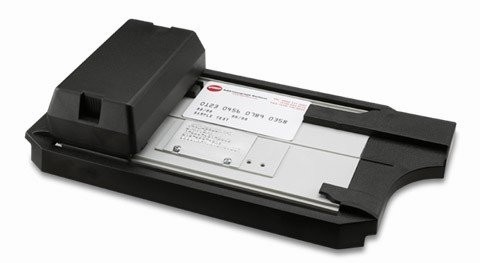I’ve been using credit cards for +30 years. When I started using them, there was no electronic banking. I have also sold computers and software that heralded electronic banking.
So I guess I can give this question a shot.
Key equipment involved in credit card payments in the pre-electronic banking era were:
- Hotcard List
- Imprinter, and
- Chargeslip.
When a Cardholder handed over his Credit Card to the Merchant, the Merchant would first read the expiry date embossed on the card. If the card was past expiry, the Merchant would decline the card and ask the cardholder for an alternative mode of payment (so as not to lose the sale).
If the Credit Card was valid, the Merchant would look up the Card Number in the Hotcard List. This was in the form of a book with 50–100 pages. The book would be circulated by the Credit Card Company to all Merchants in its network once a month / quarter. It contained the list of all credit cards that were to be “hotcarded” for various reasons viz. Dues not settled, Credit limit busted, etc. The Merchant would decline a hotcarded card and typically impound it (so that it’s taken out of circulation). Most Merchants would ask the Cardholder for an alternative mode of payment (so as not to lose the sale).
For a high value transaction that could potentially bust the credit limit on its own, the Merchant would call up the Credit Card Company via telephone, speak out the credit card #, and take a specific authorization before going ahead with the transaction.
This is how the credit limit of a particular cardholder was enforced. As you can see, the Merchant never comes to know the cardholder’s credit limit.
As the next step, the Merchant would insert the Credit Card into the Imprinter, take an imprint of the Credit Card on a blank Chargeslip, and fill out the transaction value by ball pen. The chargeslip came in duplicate. The Merchant would hand over one copy to the Cardholder and retain the other copy for himself. Once in two days or so, the Merchant would bunch up all the chargeslips gathered during that period, physically visit the Credit Card Company’s nearest office, and hand them over.

This is how the Credit Card Company came to know about all the payments made by the Cardholder.
With the transition to electronic banking, the Imprinter has been replaced by POS Terminal, which is connected to the Credit Card Company via Leased Line or Internet. Unlike in the past, each and every transaction goes from the POS all the way to the Credit Card Company’s Server, where a Credit Card Management Software checks whether the credit card is hotcarded or not, and accordingly issues an Authorization or Decline notification back to the POS. The chargeslip is printed out in duplicate from the POS terminal at the end of the process with the approved / denied status. The Merchant goes ahead with the transaction or declines it based on the status. If the transaction is approved, the Merchant simpy hands over the goods to the Cardholder. It it is denied, the Merchant typically asks the Cardholder for an alternative mode of payment (so as not to lose the sale). Even here, the Merchant does not know the cardholder’s credit limit.
Through the transition from non-electronic to electronic banking, one thing has remained more-or-less unchanged during my +30 years of use of Credit Card: The Credit Card itself. It’s still a plastic card of the same size. The magstripe at the back has been supplemented – but not yet replaced – by regular or Contactless / NFC Chip in the front. Mobile Wallets that tokenize the credit card details have emerged and are gaining traction. But plastic is still quite ubiquitous.
UPDATE-1:
Cf. David Critchley ‘s below comment.
OMG – hotcard list of 100 pages! Here in Australia, I never saw one more than a couple of pages long, ha ha.
I guess our population was only 18 million or so at the time (vs USA what? 280 million?)
I need to use an image to reply to this comment.
Since I couldn’t find a way to insert an image in the comment box, I’m replying by way of this update.
The Hotcard Book was A5 size.
Assuming credit card penetration was 10% of the population at the time,
Number of Credit Cards in Australia = 0.1 * 18M = 1.8M.
If the Hotcard List was two pages long, then it couldn’t have had more than 220 delinquent credit cards on it.
That means a Delinquency Rate of 220/1.8M*100% = 0.0122%.
That’s an amazingly low figure.
I don’t think the Delinquency Rate for Credit Card was that low in India.
I have no idea how many credit cards were in circulation at the time. It was the early days of credit card industry in India. Credit Scoring systems didn’t exist. Most banks followed a “Fresno Drop” strategy of acquiring credit card customers. I got my first credit card even without applying for it. The company in which I was working at the time had its payroll account at this bank. When the bank launched a credit card, it simply issued one to all the ~5000 employees in my company. I don’t know what was the delinquency rate on that card.
Since it was a closed-loop card, I decided to apply for another credit card, which was open-loop. There was no update from the bank for several months after I submitted my application. I then heard that this bank’s “Fresno Drop” strategy had backfired very badly. Apparently, its Auditors put a stop on the issue of new credit cards because it had huge delinquencies on its existing portfolio.
Going by that, on second thoughts, even a 100 page Hotcard List, which couldn’t have had more than 11K delinquent credit cards, seems too thin.